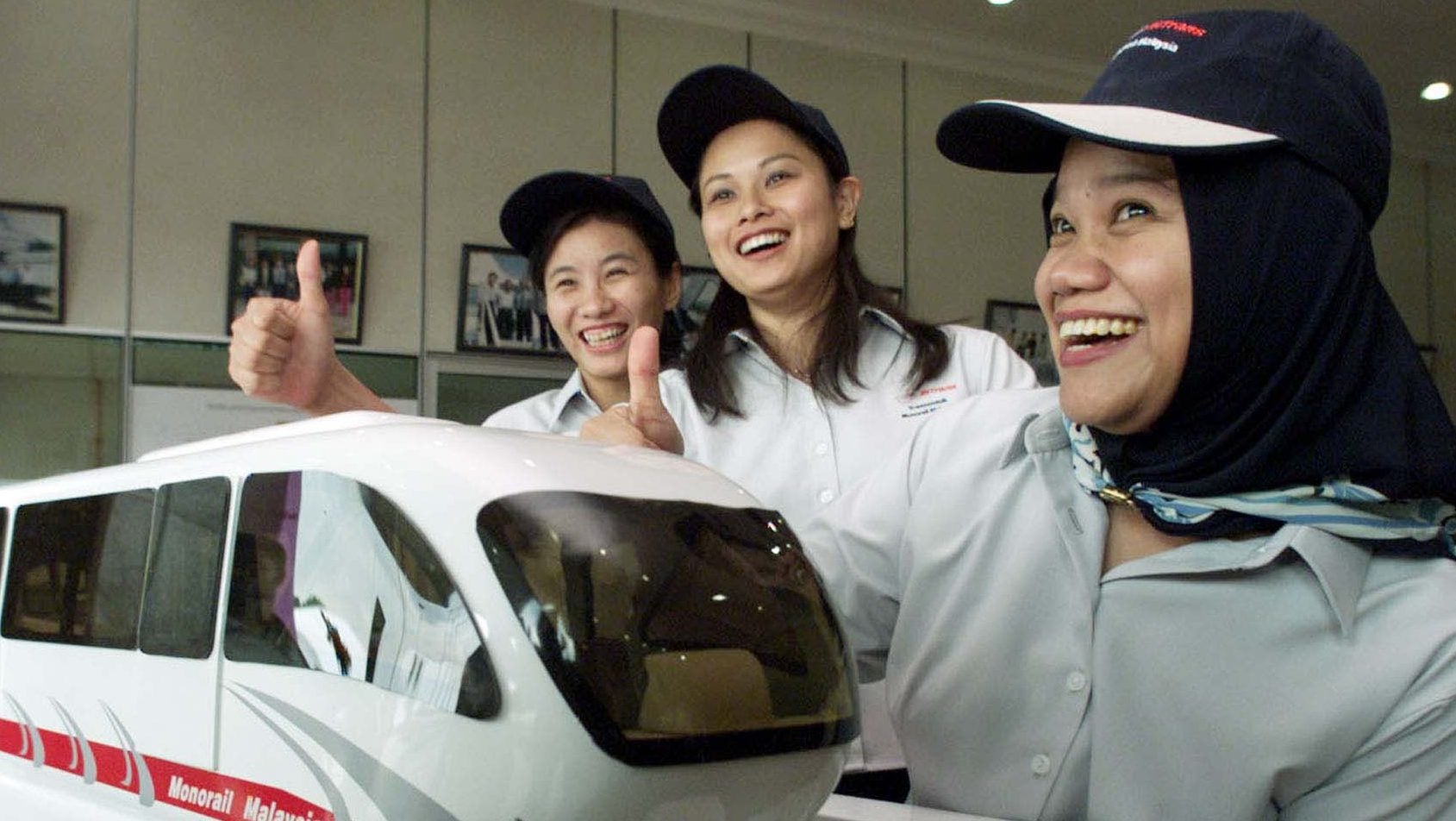Monorails are back
Relegated to the backlots of Disney World and mocked by the Simpsons, a long maligned form of transportation is mounting a one-rail comeback.


Relegated to the backlots of Disney World and mocked by the Simpsons, a long maligned form of transportation is mounting a one-rail comeback.
In the next three years, monorail manufacturers report they’re likely to double or triple of the word’s current track miles, most of it in Asia and Latin America. China’s BYD and Canada’s Bombardier plan to add 295 miles of new track by 2019, and even more projects have yet to be announced. Since monorails debuted in Germany in the early 1900s, only about 254 miles of tracks have been built globally.
That’s changing. Monorails have historically occupied a niche job, mostly hauling tourists and sightseers around parks, olympic campuses, and zoos. But modern day monorails are filling a coveted spot in urban transport: cheap, fast and electric. They can go where elevated rail cannot (lighter cars and superstructure mean a much smaller footprint in tightly packed city centers). System costs vary widely (from $27 million per kilometer in India to more than $73 million per kilometer in Dubai, United Arab Emirates), but prices are often lower than subways or elevated light rail. The stodgy monorail is suddenly the belle of the ball for cash-strapped cities like São Paulo, Brazil, and Riyadh, Saudi Arabia.
Not that it has escaped its past just yet, says Ben Jurjevich a product development engineer in BYD’s North American headquarters in Los Angeles. When the company discusses new monorail systems with cities, invariably the conversation circles back to theme parks and the infamous Simpsons episode in which a huckster cons Springfield into buying one.
But the singular form of transportation is no longer a joke. “The tech has come a long way since then,” says Jurjevich. In the last five years, manufacturers such as Hitachi, Bombardier and BYD have adopted new electric vehicle technologies for monorails and expanded their capabilities. Battery and motor technology is improving performance, and new research money has lowered the costs of monorail construction. BYD’s newest models even incorporate energy storage and solar panels on stations to lower emissions and energy demand.
Not that they’ve all been successes. India’s first monorail was a dangerous failure, and lines around the world haven’t lived up to ridership expectations. It’s possible this latest spate of talks–similar to the surge of interest in automated transit rail by about 70 US cities during the mid-1970s–will fade as well. Only three such systems were ever completed.
But monorail makers are planning for banner growth. BYD inaugurated its first commercial monorail in September after expanding beyond its core electric vehicle business. Los Angeles mayor Eric Garcetti has proposed a monorail to tackle traffic on the 405 freeway. Egypt will soon have its very own. BYD estimates (paywall) the market for monorails in China alone is worth around $450 billion spread among 300 cities. No word on when those will be built.